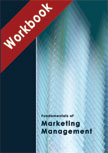Tetra Pak's Packaging Innovations




|
|
ICMR HOME | Case Studies Collection
Case Details:
Case Code : MKTG065
Case Length : 16 Pages
Period : 1956-2003
Pub Date : 2003
Teaching Note :Not Available
Organization : Tetra Pak Inc
Industry : Packaging
Countries : Sweden
To download Tetra Pak's Packaging Innovations case study
(Case Code: MKTG065) click on the button below, and select the case from the list of available cases:

Price:
For delivery in electronic format: Rs. 400;
For delivery through courier (within India): Rs. 400 + Rs. 25 for Shipping & Handling Charges
» Marketing Case Studies
» Marketing Management Short Case Studies
» View Detailed Pricing Info
» How To Order This Case
» Business Case Studies
» Case Studies by Area
» Case Studies by Industry
» Case Studies by Company
Please note:
This case study was compiled from published sources, and is intended to be used as a basis for class discussion. It is not intended to illustrate either effective or ineffective handling of a management situation. Nor is it a primary information source.
|
|
<< Previous
Excerpts
The Story of Tetra Pak - A 'Classic' Breakthrough
The roots of Tetra Pak can be traced back to Akerlund & Rausing (A&R), a packaging company established in 1920 in Sweden by Ruben Rausing (Rausing) and Erik Akerlund.
Since its inception, A&R played an integral role in the way business was conducted in Sweden, thanks to its innovative packaging and distribution systems. In fact, the company is believed to be one of the catalysts for the modernization of the country's distribution and retailing systems...
|
|
The Story of Tetra Pak - The 'Aseptic' Advantage
In 1956, having tasted success with the milk and cream packaging initiatives, Tetra Pak began working towards creating packages for other liquid foods.
|
|
The company was aware of the fact that while Tetra Classic was hygienic, it could not keep food fresh for long periods. Researchers at the company thus began working on 'Aseptic Packaging Technology.'
They conceived the idea of sterilizing the package itself before filling it with liquid food. This way liquid food could be preserved for a longer period of time without using preservatives or refrigerating it.
Researchers at Tetra Pak identified three basic materials for making aseptic packs - paper, polyethylene and aluminium foil - each having its own benefits. They were... |
Excerpts Contd...>>
|
|



